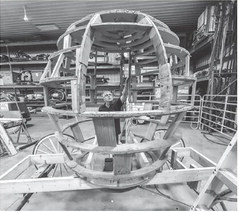How to maintain an older vehicle
New cars have been costly for quite some time, but those costs have spiked considerably since the onset of the COVID-19 pandemic. That unprecedented rise has led many motorists to wonder how they can get more mileage out of their existing vehicles.
According to data from Kelley Blue Book and Cox Automotive, the average cost of a new car in September 2021 was just over $45,000. That marked a $3,000 increase from June 2021 and a $5,000 increase from the end of 2020.
Drivers who can’t afford to keep up with the rising cost of new vehicles can take these steps to keep their existing cars running smoothly for years to come.
• Take care of the timing belt. Engines may get all the glory, but they cannot run smoothly without a fully functional timing belt. Engines need various components to do their job, and those components must do so at the right time for the engine to run smoothly. Fully functional timing belts help to synchronize movements, but belts must be replaced every so often. Owner’s manuals may note when to replace the timing belt, but they generally must be replaced every 60,000 to 105,000 miles. That’s infrequent, but drivers can ask their mechanics to keep an eye on their timing belts. One issue many drivers encountered in the early months of the pandemic when people were driving less frequently was timing belts that were failing long before they reached the projected mile markers. That’s because infrequent driving can hasten
the demise of the timing belt. This is something for aging drivers who no longer drive a lot to keep in mind.
• Take care of the brakes and associated components. The experts at Popular Mechanics urge drivers of older vehicles to replace their brake fluid every two years. Popular Mechanics also advises drivers whose cars are more than seven years old to replace the rubber brake lines when major brake work is required.
• Pay attention to oil levels. The older engines get, the more oil they’re going to burn. So drivers of older vehicles should check their oil levels more often than they would if their vehicles were brand new. This also is a great way to discover leaks before they lead to potentially significant issues.
• Don’t skip maintenance appointments. Even if you’re still driving less due to the pandemic, it’s best not to skip recommended maintenance intervals. That’s true for drivers of all cars, but especially those whose vehicles are aging. Routine tune-ups and oil changes, which may need to become more frequent the older the vehicle gets, can keep cars running smoothly and protect the engine over the long haul.
The rising cost of new cars is compelling millions of drivers to keep their cars longer than they might have anticipated. Some simple maintenance measures can help those cars run strong for years to come.




